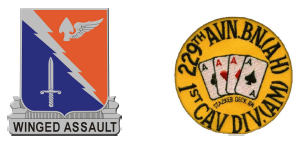Difference between revisions of "BW Hover power check"
(Created page with "File:229AHB_logo.png '''Basic Wings requirement:''' TASK 1028 - ''PERFORM HOVER POWER CHECK'' ==3. Basic Wings – Hover power check== ===3.1. Objective: Perform...") |
(No difference)
|
Latest revision as of 07:27, 20 February 2020
Basic Wings requirement: TASK 1028 - PERFORM HOVER POWER CHECK
3. Basic Wings – Hover power check
3.1. Objective: Perform a hover power check as per 1028 UH-1h ATM 2007.
3.2. Competencies expected: The pilot will demonstrate bringing his craft to a 5’ stationary hover.
CONDITIONS: In a UH-1 helicopter at an appropriate hover height and with performance planning information available.
STANDARDS: "Mission Readiness"
1. Determine if sufficient power is available to perform the mission. GO/NO-GO IGE vs OGE
2. Determine if wind condition exceeds directional control margin (DCM) or longitudinal cyclic values.
3. Determine Approach based on center of gravity (COG) limits, if applicable (using indicated fuel). Hover vs Running Landing
PROCEDURES:
Use a 5-foot stationary hover (2-foot stationary hover when using tabular data)
Any time the load or environmental conditions change significantly (200 pound increase, 500 feet PA increase, or ± 5 degrees Celsius),
perform additional hover power checks and,if necessary, recompute the PPC using tabular data. (See Task 1011.)
If the torque required to maintain a stationary hover does not exceed the OGE Go/No-Go torque, any maneuver requiring OGE/IGE power or less may be attempted.
If the torque required to maintain a stationary hover exceeds the OGE Go/No-Go torque but does not exceed the IGE Go/No-Go, only IGE maneuvers may be attempted.
If the IGE NO-GO torque value is indicated prior to reaching hover height, stop the hover power check and land the aircraft.
